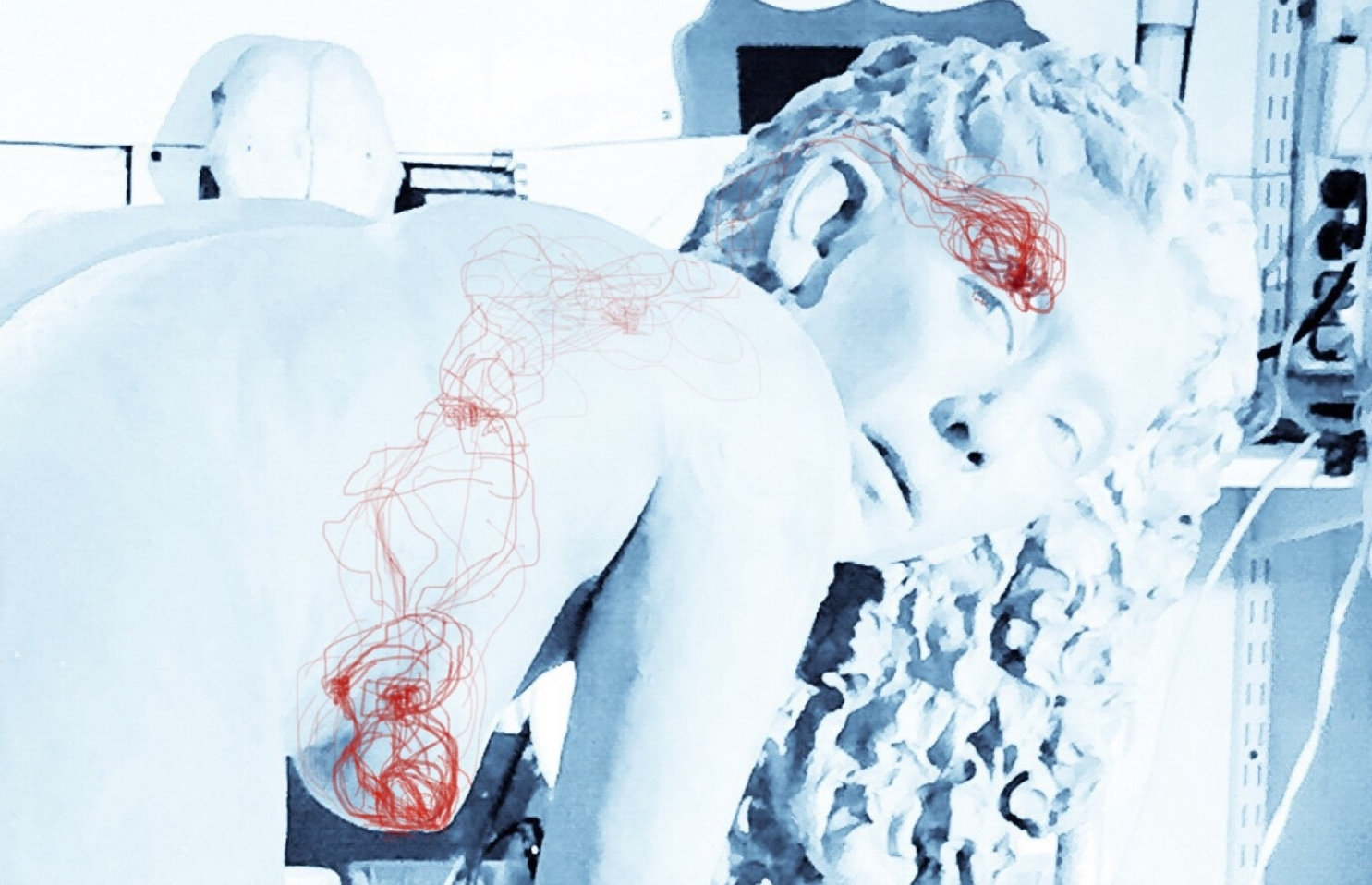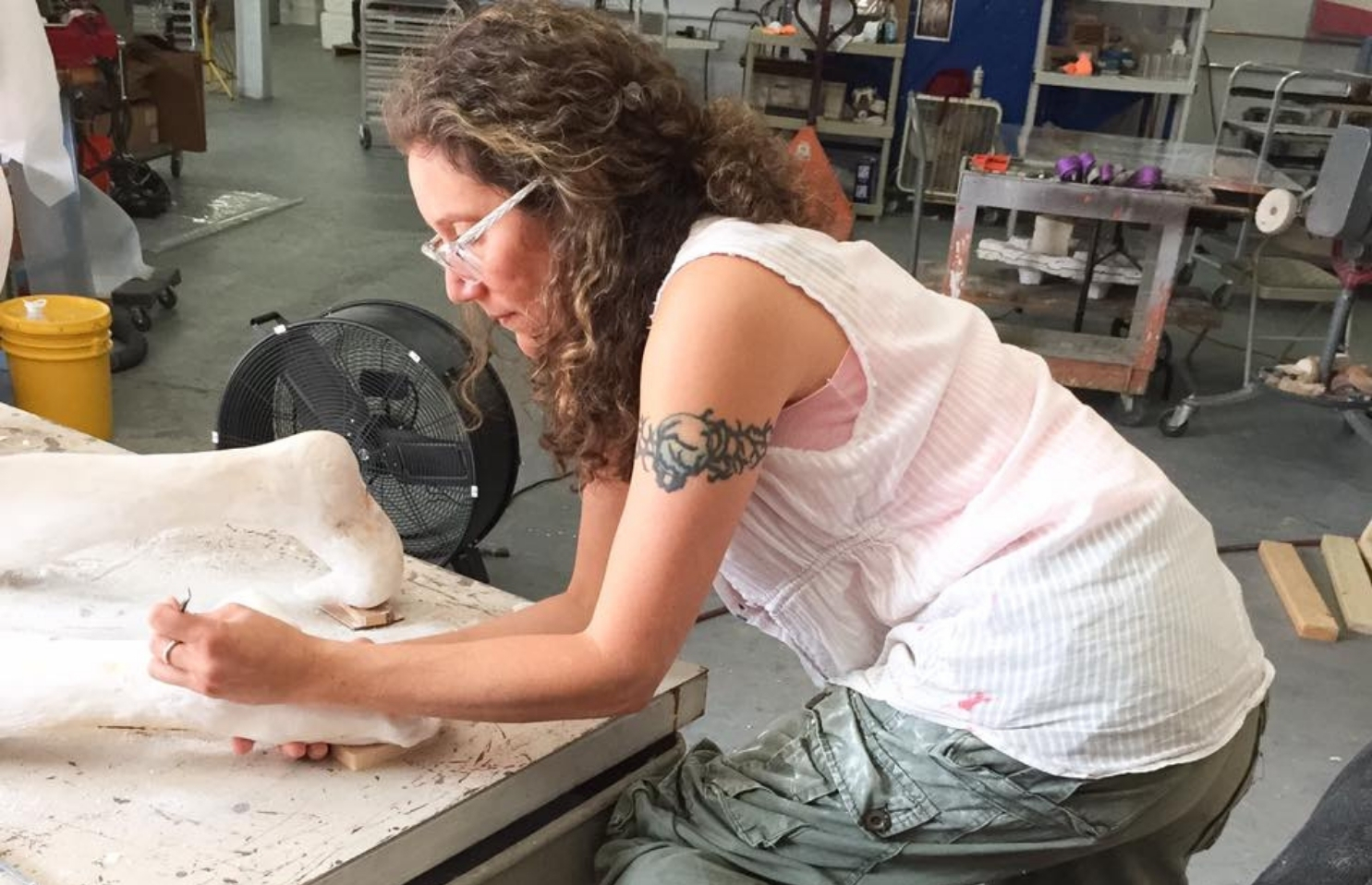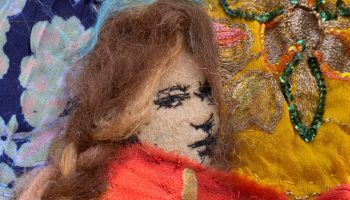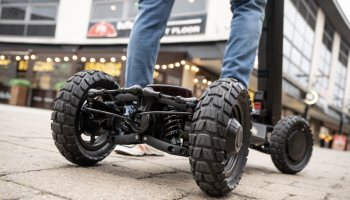What does it really take to be an artist? Creativity? Ideas? The fact is, being an artist is not simply limited to what you do in a studio but also everything that circles around it. The way you live your life, envision the future, and simply how you intercept and embrace certain methodologies.
Human Diaries had the privilege to interview one of the talented and creative sculptors who is in the process of a Kickstarter campaign called: OUT ME IN ME OUT.
We would love for you to join us in support of Beth and her talent. Like and share with your family and friends. Below is our interview with the artist:
Q – Hi Beth! Could you please tell us a little bit about yourself? When did you first become interested in sculpting?
A – I first became interested in sculpting when I was 3 or 4 and able to climb into Henry Moore’s bronze sculpture, Nuclear Energy, that stood in front of my dad’s physics lab at the University of Chicago. It had this little pocket-like shelf inside that I used to place the dandelions in I had collected from the surrounding grass. I loved being inside of a man-made object that connected so much to its surroundings, it seemed to have grown there. To me this sculpture was absorbed by everything around it. I remember the temperature of the bronze changing as the time of day or season changed, the way the shadows fell and altered my perception of the form, and the way the metal tasted and felt on my tongue when I mischievously licked it when my mom wasn’t looking. Let’s just say that Nuclear Energy profoundly impacted me on a multi sensory level. It was the bridge that lead to my becoming aware of my hyper-awareness of objects and the impact that they had on the spaces that contained them.
By the time I was 10, I considered myself an artist, and by the time I was 16, I was making room-size sculpture-installations in our family basement that were direct expressions of my actual dreams.
These dreams and the images that they produced in my head, had to do with my own sense of alienation regarding where I fit, or didn’t fit within “the human pack”. I had grown to feel like somewhat of a voyeur, always on the outside looking in. The amalgamation of these feelings pestered my daily thoughts to such an extent that I developed somewhat of a compulsion and desperation to figure out how to get them out of my head. Translating these thoughts into drawings, spaces and forms gave me a sense of calm and relief. “Being” in front of them or even inside of the finished art piece, provided clarity and a deeper understanding of how my personal issues related to my external world. Until these dream images were brought to life, they blocked all potential new ideas. So essentially, all of my work had to and still has to happen.
Q – How do you prepare to sculpt?
A – There are three elements that contribute to my preparation for sculpting; the emotional, the physical, and the intellectual element.
In terms of the emotional element, I ask myself a series of questions before I begin a piece, and continue asking them throughout the sculpting process. In fact I am always thinking about and expanding upon these questions.
How does my body relate to other peoples’ bodies, and spaces? What does it mean to be a part of “the human pack”? How does the technological era that we live in impact our perception of reality and human connectivity? What does the future look like for the human species in terms of our bodies? What does it look like for other animals’ bodies? How connected are we to nature and fellow animals, and what part of the human population cares and why? How connected are we to the animal in ourselves? How are our instincts and sexuality influenced by all of this? How much are we as humans actually looking at each other? Are we in the thick of it or just voyeurs? How comfortable are most people in their own bodies? In their own lives? How prevalent is the feeling of alienation for most people in their inner lives? What role do we as humans play in being the consumer? When do we perceive ourselves as the consumed? And finally, how does my perception of these concepts and questions relate to my own past? How can I most productively define my past? How does my perception of myself influence my perception of my past? How much of my perception of my past is mine and how much of it is what others have told me it was?
The physical element is an intricate repetitive process of dreaming and making, dreaming and making, dreaming and making. I take my dream sequences and first actualize them via simple drawings. Then after 20 hours or so of drawing, I make a small cardboard model using one of the drawings as a reference, keeping the final dimensions under 2ft x 4ft. From there I dramatically light the model and draw from it for another 5 to 10 hours. Next I intentionally begin to dream about all of the hardware and materials that I might use to construct the form or installation. Then again, I make another model that is even larger, like the size of a small car, but this model has many more details in terms of how things are held together, all the way down to whether or not I will use galvanized screws, or ones I rust myself. (My installation ALL TO NOTHING/NOTHING TO ALL that was 50 feet long, had thirty thousand screws in it). The very last step before construction is that I scale the model up mathematically to full size, and actually draw the installation out in space with string. It ends up looking like a line drawing in space. From there I make patterns, gather the materials, and start building.
Things have changed a little bit with my new installation OUT ME IN ME OUT. In the past, 50% of my materials came from old houses and barns. I would get permission to tear down a dilapidated structure and haul the materials to my studio. Of course, within these installations were shards of plexiglass, bunches of wire, and poured shellac used to create images or to stain the wood. Glass and transparency have always been a part of my pieces. But OUT ME IN ME OUT is a little bit different then my other installations in that all of the components will be actual life-size figures made from solid clear Lucite, which is the same material as plexiglass (cast acrylic). The Lucite is imperative to the concepts of reflection and transparency in this piece because these elements are being used to express the specifics of alienation and voyeurism. But just to clarify, there are also preparation processes that are similar to the past installations like drawings of the figures, models, and plaster casts of my hands feet and face used as references to sculpt from.
The intellectual element is permanently etched in the back of my mind, from the conception, to the construction, to the exhibition of each and every installation. It goes as follows:
1. OBJECTS: The viewer, the forms I create, and me.
2. SPACE: The forms I create, the space I create them for, and the altered space once my forms have entered them.
3. TIME: The [moving physical] interaction between the objects and the space, in “the here and now”.
4. EXPERIENCE: How one interacts with my installation and how it is then interpreted. How this interpretation becomes a part of the fabric of one’s memory and possibly influences future experiences. How each persons experience is influenced by their own history, preconceived notions of the world, and even their DNA.

Q – What is the most difficult part about sculpting?
A – I think the most difficult thing for me is loneliness. Working for hours on end alone in my studio can be very distracting and something I have struggled with over the years. Having a studio mate was never an option because that unfortunately is even more distracting than the loneliness. Then of course there is the issue of funding. Dealing with the feeling that I have to convince others that the huge pieces I build are justifiable and worthy of their time and money is an emotional exercise that never seems to get any easier. Even having to convince family members of the value of my work creates a significant amount of stress. Art making is a huge investment of time and money and affects everyone in my life on many levels for the better and for the worse. There is a certain line artists have to walk when speaking with others about the value of their work. It is the very fine line between sounding passionate and confident about your work, and sounding pushy, annoying, insolent, and arrogant about it. I think I have managed to walk this line successfully so far in that I have been fortunate enough to receive grants in the past from The Pollock-Krasner Foundation, The Memorial Foundation for Jewish Culture, and the Eben Demarest Trust Fund. Now with my Kickstarter, I have had to put all of this “line walking” to the most difficult test. It has not been easy. My first Kickstarter failed, but thank goodness my second one is going great. It’s over October 14th.
The other challenges to being a sculptor are more physical. Navigating the toxic chemicals. Finding a way to protect my back, and honing in on the basic skills it takes to translate specific ideas into forms. When it comes down to it, eye/hand coordination plays a dominant role. And then there’s simply the fact that every time I go into my studio, I feel like I am reinventing the wheel! It’s just mentally and physically exhausting and somewhat anxiety inducing. I do deal with ongoing anxiety and OCD although I would in no way categorize my level of these conditions as crippling. They are just extremely distracting especially when I am tired, and definitely get in the way of my happiness and productivity. The good news is I found running! I run totally barefoot, no shoes of any kind. Been doing it for 4 years now. Running is as satisfying as making art and feels amazing like the instantaneous gratification of sex (without a condom)! Definitely a big stress releaser.
Q – How are you documenting your art?
A – I am a bit of a documenting addict (okay so the OCD tendencies can come in handy). I have videos of my work dating back to when I was 20, some of which I have used for grant applications in the past.

Q – What special precautions do you take for safety?
A – When it comes to safety I am pretty meticulous, especially when other people are involved. Sometimes I can get lazy if it is a quick spray of something, but I am never lazy when it comes to my ears, eyes, or skin when using tools. I have a friend who ended up with a sawsall blade in his eyeball, another friend who has permanent ringing in his ears, plus a few friends missing fingers.
Q – What is something most people don’t know about sculpting?
A – Something most people don’t know about sculpting is that it is like a sport and very much a mind and body experience. You have to be in pretty good shape to do it and be extremely careful about how you lift things and how long you lean or stand in one position.
Q – Where would you most like to live in the world?
A – Where I live has more to do with the people than the terrain. I have lived in enough different places and countries to say that I need to be around people who question, people who have something positive to offer the world like kindness, creativity, or a healthy perspective on having made it through a life-trauma. It’s so much more fulfilling to be around people who have a vested interest in expanding their minds and sharing knowledge. But if I could just plop down anywhere for a few years and bring my family with me, I would like to move back to the mountains in Italy. Love the food, love the land, love the people, and miss my friends.
Q – What’s been the best experience you’ve had about sculpting?
A – The best experience about sculpting is feeling like an alchemist. Turning everyday materials into something new and even beautiful, that communicates something emotional, and hopefully something that others can relate to. I know I am very lucky to be able to make art. It has saved me on many levels.
Q – What are your hobbies?
A – My hobbies are poetry, songwriting, and running. For about 4 years the poetry and songwriting actually replaced my visual art. I had a child with some medical issues that are since resolved. I couldn’t get into my studio, so I wrote instead. I have been writing poetry my entire life. It was an easy go-to solution to expressing myself.
Q – How would you describe yourself in 3 words?
A – I need four!
Loving; Hardworking; Curious; Irritating.
Q – Do you have any funny stories you’d like to share?
A – I have a funny art story. When I was in undergrad before I was 20, I made this giant 10-foot tall tampon-ish looking thing (the taboo element of tampons intrigued me). It had these long tentacles coming off of it and was on giant caster wheels. It was totally hideous and uninteresting. I miraculously got it into a group show. My friend Judy and I loaded it up on top of her station wagon and rolled the windows up so that the tentacles were partially inside the car, pinched and “secure”. We proceeded to drive down a 4-lane road, and all of the sudden I saw a woman swerving in the rear-view mirror. There in the road was a giant unidentifiable object that just about caused a pile-up. I couldn’t identify it because the tentacles were still in the window. I actually pulled over to see what the object was that had caused the woman to swerve. Just to be clear, at the time, it was absolutely NOT funny but looking back on it, it is hilarious that a giant tampon almost caused a pileup!
Q – What do you think of Human Diaries?
A – What I love most about Human Diaries is that it gives people the opportunity to put their complex feelings and experiences into words. To me, writing and talking helps connect us to one another and keeps us from acting out conflict. If we are not in fact acting out our conflicts, and instead are exploring them through words, we are going to connect on a deeper more trustworthy level with people and this of course is what I care the most about. For me life is worth living because of the other people and animals in it.





